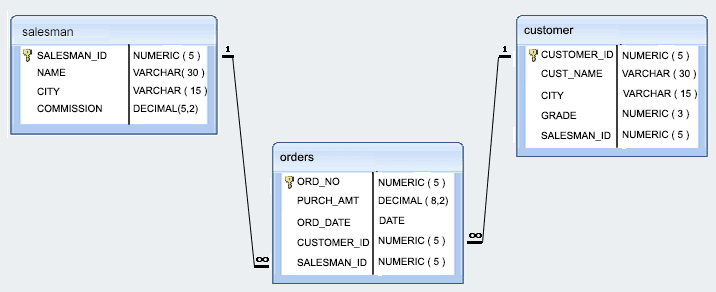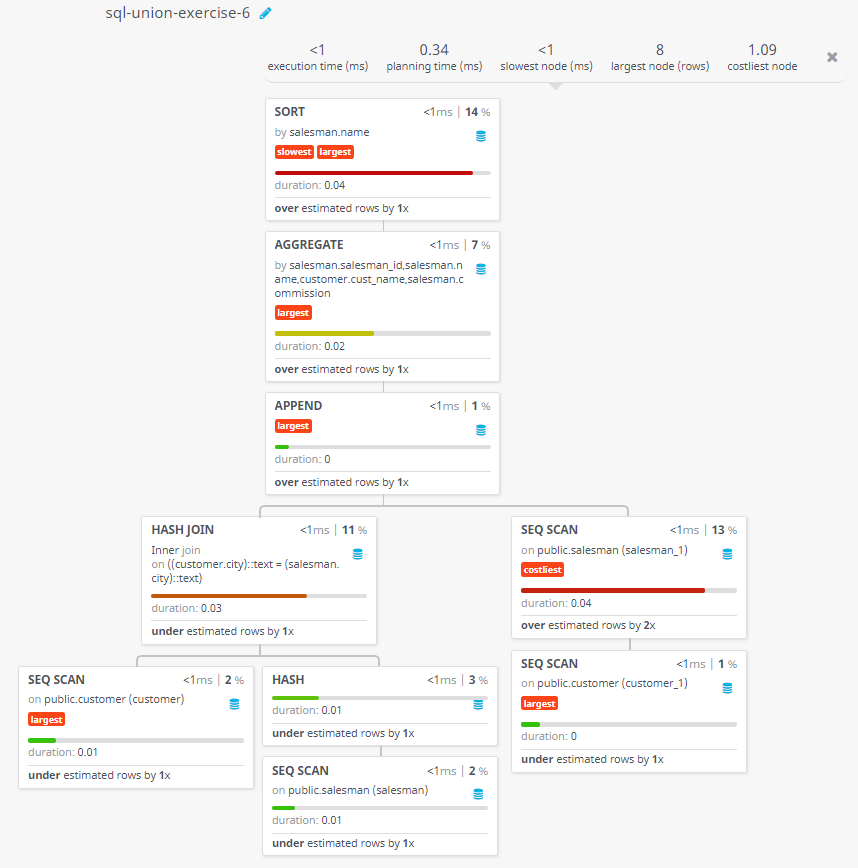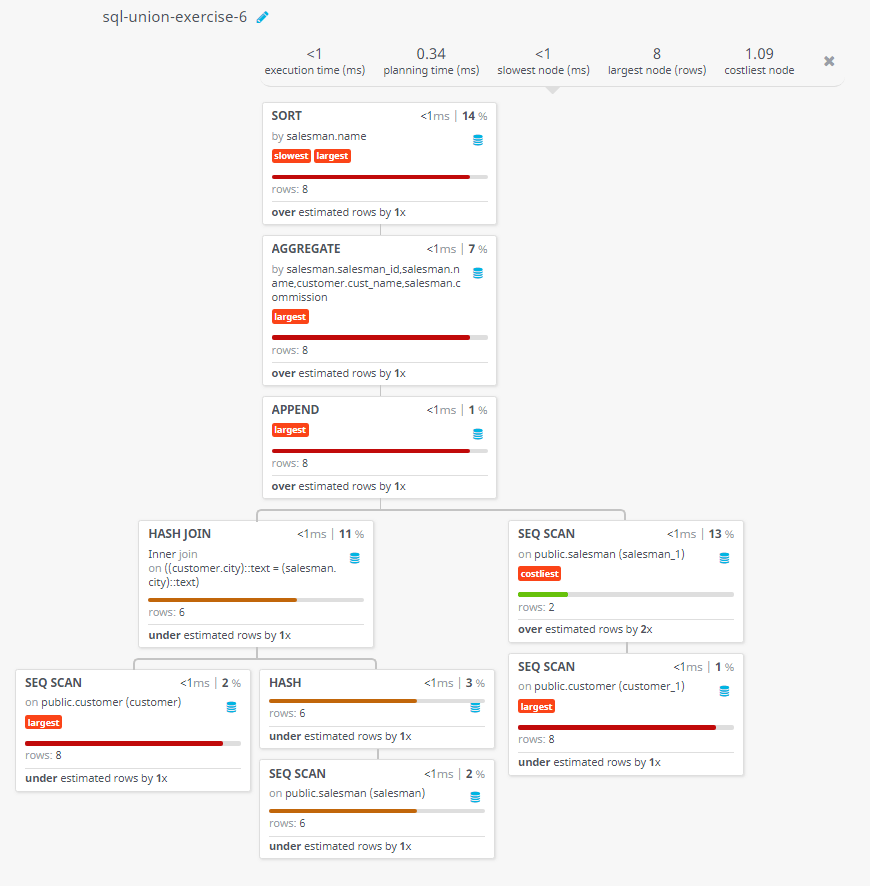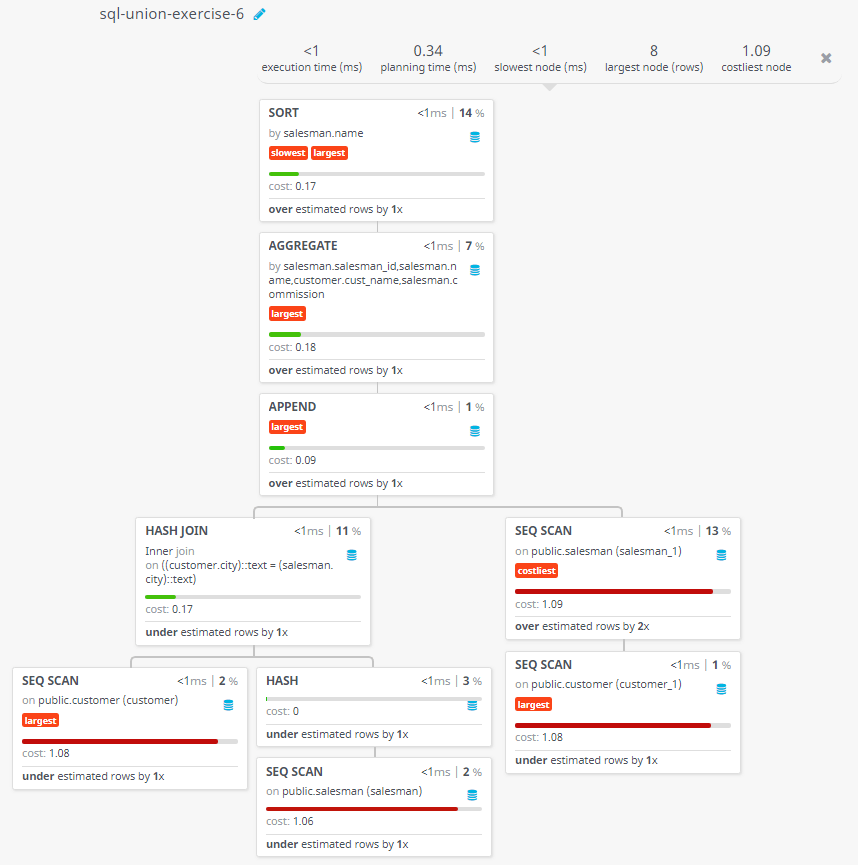SQL Exercises: Salesmen who do not have customers in their cities
6. From the following tables, write a SQL query to find those salespeople who live in the same city where the customer lives as well as those who do not have customers in their cities by indicating 'NO MATCH'. Sort the result set on 2nd column (i.e. name) in descending order. Return salesperson ID, name, customer name, commission.
Sample table: Salesman
Sample table: Customer
Sample Solution:
-- Selecting columns (salesman.salesman_id, name, cust_name, commission) from tables 'salesman' and 'customer'
SELECT salesman.salesman_id, name, cust_name, commission
FROM salesman, customer
-- Filtering rows where the city in the 'salesman' table matches the city in the 'customer' table
WHERE salesman.city = customer.city
-- Performing a UNION operation with the result set of a subquery
UNION
-- Selecting specific columns (salesman_id, name, 'NO MATCH', commission) from the 'salesman' table
SELECT salesman_id, name, 'NO MATCH', commission
FROM salesman
-- Filtering rows where the city in the 'salesman' table is not equal to any city in the 'customer' table
WHERE NOT city = ANY
(SELECT city
FROM customer)
-- Ordering the result set based on the second column (name) in descending order
ORDER BY 2 DESC
Sample Output:
salesman_id name cust_name commission 5005 Pit Alex Julian Green 0.11 5005 Pit Alex Brad Guzan 0.11 5007 Paul Adam NO MATCH 0.13 5002 Nail Knite Fabian Johnson 0.13 5006 Mc Lyon Fabian Johnson 0.14 5003 Lauson Hen NO MATCH 0.12 5001 James Hoog Nick Rimando 0.15 5001 James Hoog Brad Davis 0.15
code Explanation:
The said query in SQL that retrieves data from the 'salesman' and 'customer' tables, and outputs a list of salespeople and their commissions based on the city where they are located and the city of their customers.
The query first joins the 'salesman' and 'customer' tables based on the condition that the salesman's city matches the customer's city. It then uses the UNION operator to combine this result with another query that selects salespeople who do not have any customers in any city. For these salespeople, the query outputs "NO MATCH" instead of the customer name.
The ORDER BY clause sorted the output by the second column in descending order.
Go to:
PREV : Largest and smallest orders on each date.
NEXT : Any salesman was matched to the city of any customer.
Practice Online
Query Visualization:
Duration:
Rows:
Cost:
Have another way to solve this solution? Contribute your code (and comments) through Disqus.
What is the difficulty level of this exercise?
Test your Programming skills with w3resource's quiz.




